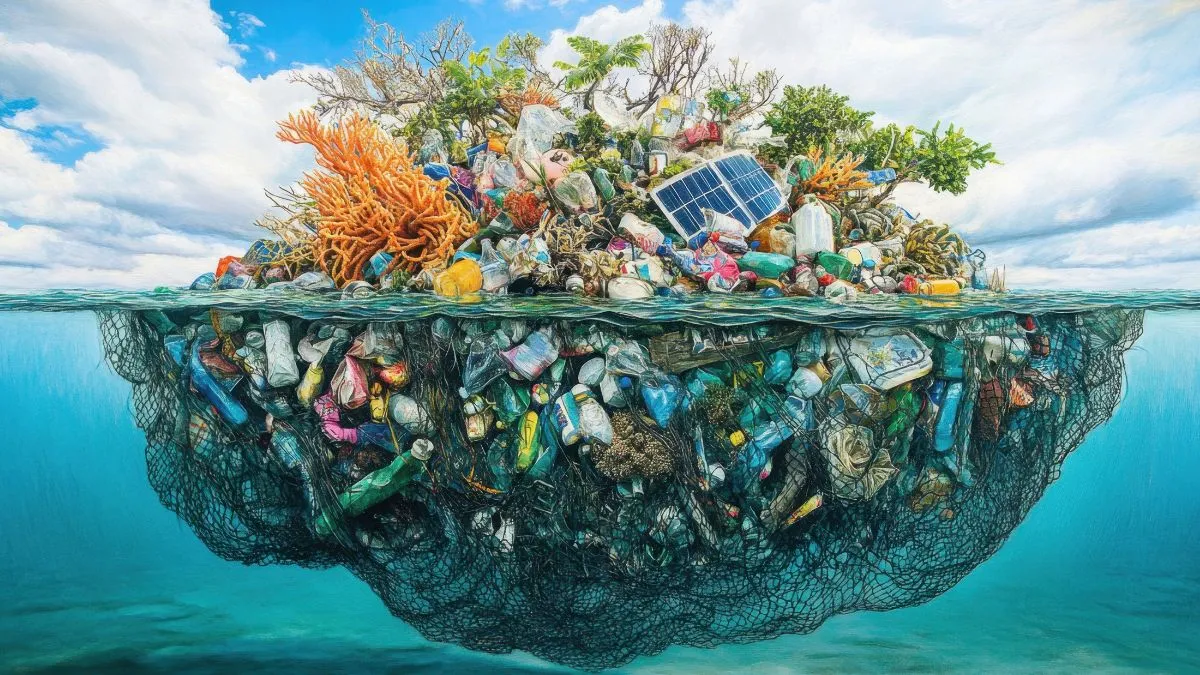- By Aditi Priya Singh
- Tue, 28 Oct 2025 03:31 PM (IST)
- Source:JND
Our oceans, which make up over 70% of the planet's surface and are home to millions of species, are its lifeline. They provide us with oxygen, control the climate, and sustain the lives of innumerable people worldwide. However, human carelessness has put our oceans in grave danger, despite their significance.
Massive amounts of waste, particularly plastic, end up in rivers and oceans every day, polluting the water and endangering marine life. Long-term harm has been caused by plastic bottles, bags, wrappers, and even microscopic microplastics that have entered the ocean ecosystem. It is devastating to see fish with plastic in their stomachs and turtles entangled in nets. It serves as an increasing reminder that the issue is not far away and that we are all impacted.
To protect our oceans and the life they hold, it’s time we understand why plastic ends up there and what we can do to stop it.
ALSO READ: World Ocean Day 2025: List Of Oceans And Their Importance In Earth's Ecosystem- Know Some Fun Facts
How much plastic enters the oceans every year?
-1761645575847.jpg) Plastic pollution in Oceans (Image: Canva)
Plastic pollution in Oceans (Image: Canva)
According to estimates from the United Nations Environment Programme (UNEP), more than 10 million tons of plastic waste enter the world's oceans every year. The primary land-based sources of this plastic, which gravely harm marine life and ocean ecosystems, are litter, poor waste management, and rivers that discharge debris into the ocean. (Source: UNEP, 2024)
How Plastic Enters The Oceans?
1. Poor Waste Management
Many cities do not have sufficient systems established to collect and recycle plastic waste. Garbage that is dumped in open spaces eventually finds its way into rivers and the ocean.
2. Overuse of Single-Use Plastics
Straws, carry bags, and plastic bottles are examples of items that are used once and then discarded. These thin plastics are easily carried into the oceans by the wind or water.
3. Industrial and Fishing Waste
Plastic waste is frequently dumped into the ocean by factories, ships, and fishing boats. One of the biggest causes of ocean plastic pollution is fishing nets that have been lost or abandoned.
4. Lack of Awareness
Many people are unaware of how minor daily routines can lead to a much more serious environmental problem. A worldwide crisis results from improper household waste disposal.
How To Stop Plastic Pollution?
-1761645587453.jpg) Plastic pollution in Oceans (Image: Canva)
Plastic pollution in Oceans (Image: Canva)
1. Reduce, Reuse, Recycle
Instead of using throwaway containers, bags, and bottles, use reusable ones. Encourage recycling initiatives and properly sort your waste.
2. Avoid Single-Use Plastic
Avoid using plastic straws, cutlery and packaging. Whenever possible, go for eco-friendly or biodegradable options.
3. Participate in Beach Cleanups
Join or organise local clean-up drives to remove waste from beaches and riverbanks. Encourage community participation for a bigger impact.
4. Support Laws and Policies
Governments have the power to ban some plastics and encourage environmentally friendly substitutes. Encourage the efforts of organisations dedicated to ocean conservation.
5. Spread Awareness
Educate people about the negative consequences of plastic pollution. Collectively, small changes to daily routines can have a significant impact.

